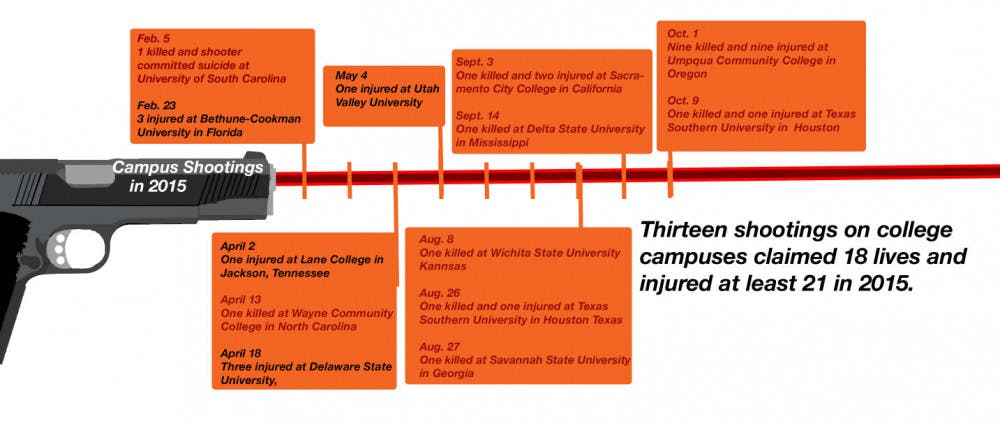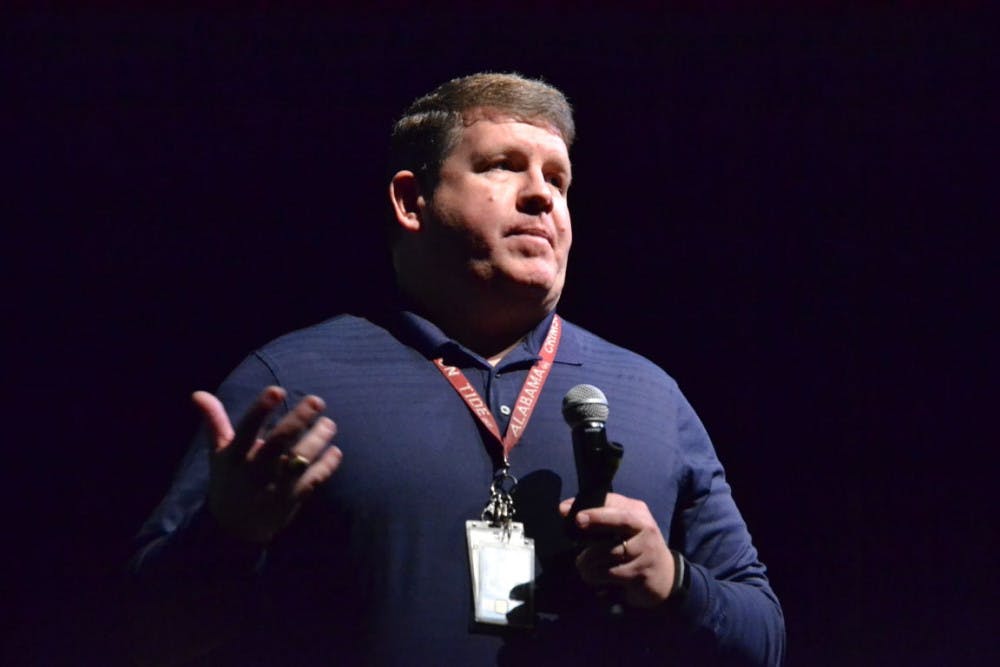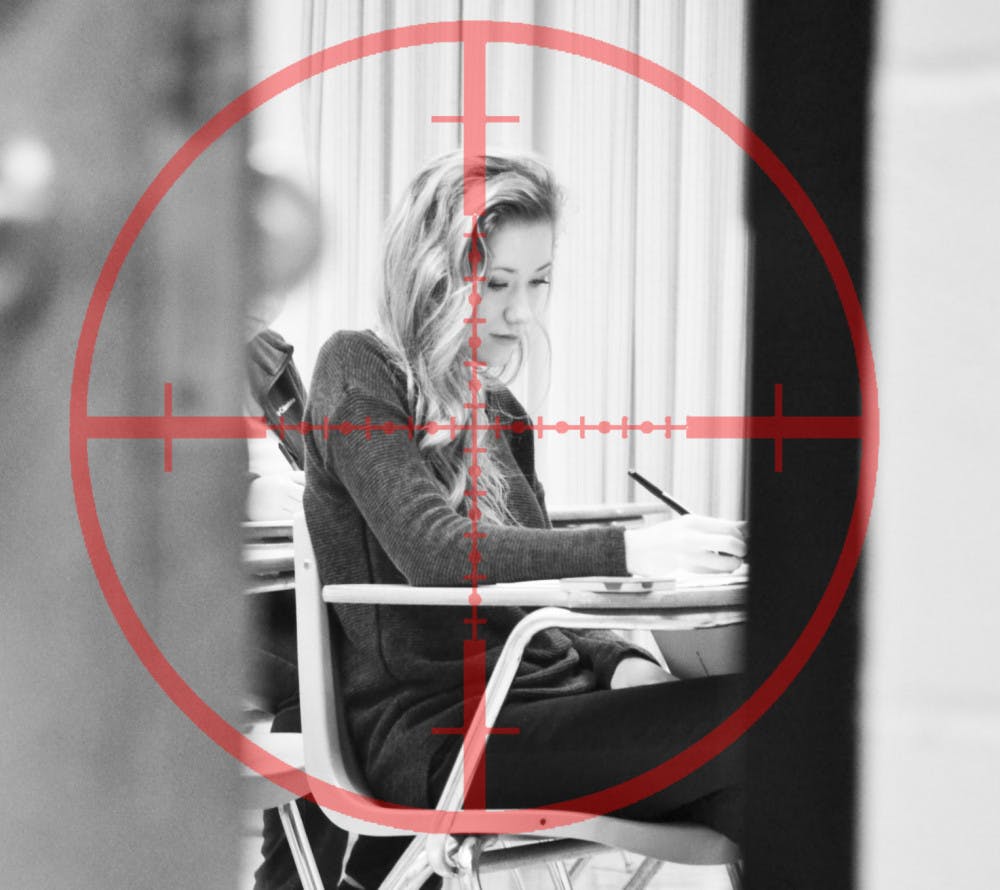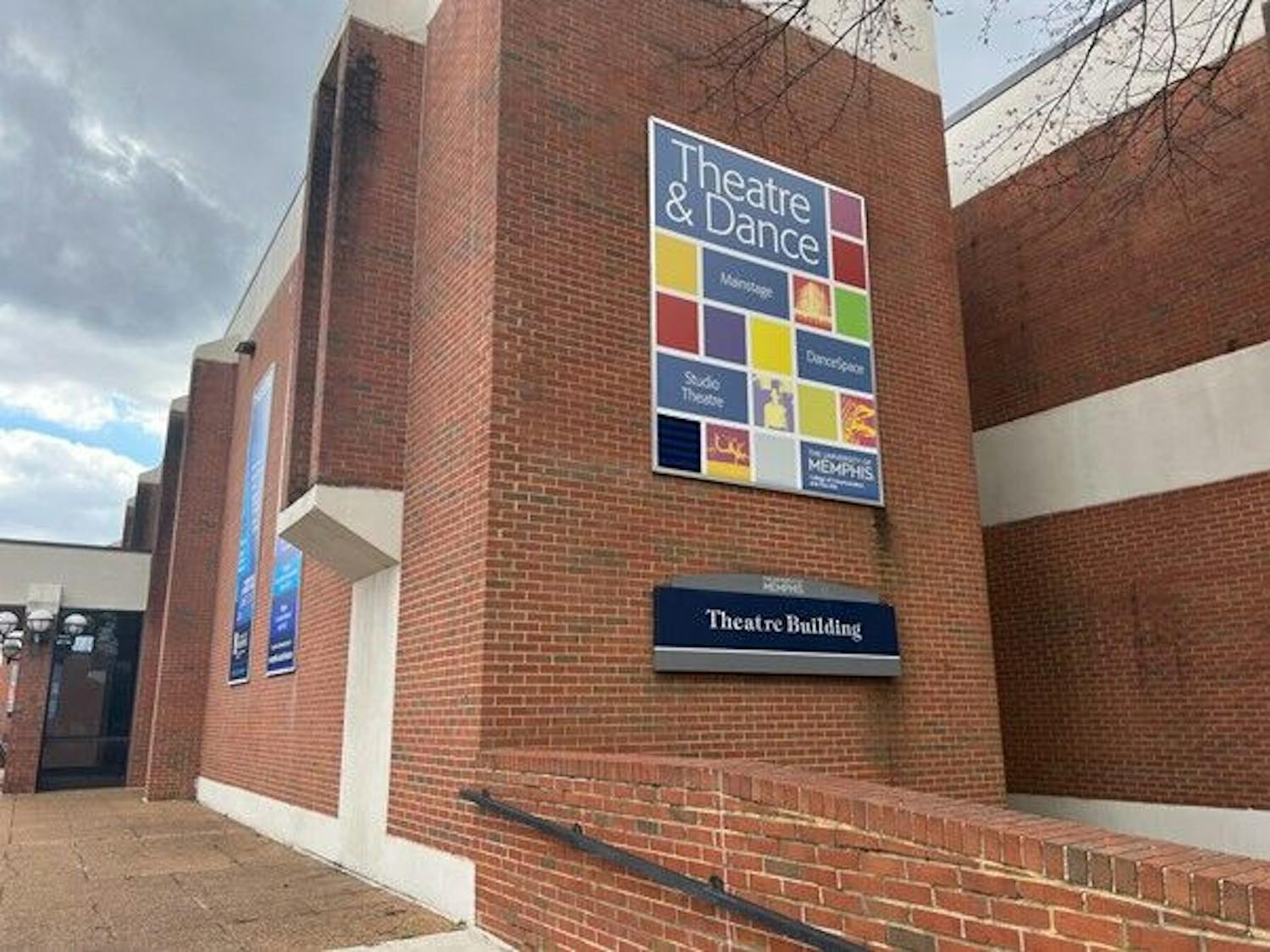On the first day of class don’t be surprised if your professor covers the syllabi’s grading scale and how to fight for your life if a fellow student should burst into the classroom with a gun.
University of Memphis Campus Police and the FBI spoke to nearly 200 University of Memphis educators and administrators about how to plan for an active shooter scenario, during the Jan. 13 seminar held at the Rose Theatre.
This comes after numerous questions from the student body and faculty about how the university will respond to a gunman on campus, said Bruce Harber, chief of campus police and assistant vice president for Administration.

Thirteen shootings on college campuses claimed 18 lives and injured at least 21 in 2015.
Harber unveiled a plan to replace nearly all door locks on campus with dead bolts that can be locked from the inside without a key, a project that could cost up to $400,000 when you include replacing doors and door frames that can’t support the locks.
During winter break, university police checked every classroom and auditorium door on campus, Harber said. While buildings had doors that did lock, a few buildings had doors with disabled locks – likely done on purpose to meet fire code. Replacing the weakest doors and locks will be the top priority, Harber said.
The project will begin in May with Patterson and Clement at the top of the list.Â
Growing concern in shooting preparedness is likely linked to what many feel was a wave of high profile shootings on college campuses across the United States in 2015. Several of these incidents resulted in no injuries.
However, the most deadly shooting – which took place in Umpqua Community College in Oregano – ended with nine killed, nine injured and the shooter committing suicide. Shootings on college campuses were one of the least common last year, but U of M police and the FBI encouraged faculty to not only develop a plan for what to do in a mass shooting but to also share the plan with their students.

The average active shooter event lasts about 12 minutes, said Tom Hassell, special agent in the FBI’s Joint Terrorism Task Force. And 43 percent of these shooting has ended before police arrive. Hassell spoke to nearly 200 U of M professors on how to prepare for a shooter on campus.
The average active shooter event lasts about 12 minutes, said Tom Hassell, special agent in the FBI’s Joint Terrorism Task Force. And 43 percent of these shooting has ended before police arrive.
>>>Some U of M students want to be armed incase of a mass shooter, Read here<<<
“From the time you dial 911 to when police arrive, you are on your own,†Hassell said. “Shooters know they have limited time from the first moment they fire their first round. Having a plan ahead of time is very important, because under pressure you are not going to come up with a great idea.†Hassell emphasized the “run, hide, fight†method recommended by the Department of Homeland Security.
He also showed the six-minute video during the seminar.
Most campus doors swing into the hallway, not into the classroom, meaning that simply putting heavy furniture in front of a door is not enough to stop a shooter from entering.
However, that does not mean the doors can not be barricaded.
Tying a rope or cord to a doorknob and attaching it to a heavy object inside room can prevent or at least stall a gunman from entering.
Derek Myers, director of police operations, said it is actually harder to pull a door open than pushing one open.Â






